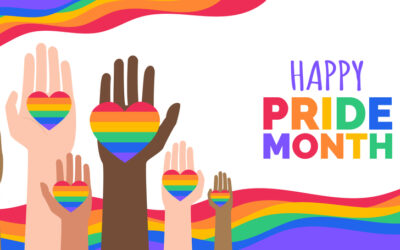There’s a lot of buzz out there about boundaries. “Boundaries” seems to be the latest catchall and code word for “how to be a healthy functioning human being and have healthy functioning relationships.”
But what are boundaries really? What do boundaries refer to? And how do you know how to locate, manage, set and respect your personal boundaries and those of others? Let’s take a closer look together.
What Are Boundaries?
Definitionally speaking, a boundary is a line marking the limit of an area; it is a divider, it separates and distinguishes what’s on this side of this line from what’s on that side of the line.
From a psychological, relational perspective, boundaries refer to those invisible but individually felt limits we sense within ourselves that indicate what we need, what we don’t need, what we can take in, what we can’t take in, what we are holding, what we need to put down and what we can and cannot give out. Our boundaries indicate what our capacity is, what we can withstand and how much we have to offer ourselves and others.
How to Locate and Listen to Your Boundaries
There is a movement and ebb and flow to boundaries in mostly two directions – either what we let in or what we give out. Our boundaries make themselves known to us through the vast and various sensations we can experience in our bodies that we label as feelings. Or we might hold a thought, belief or idea about a situation, and state that as our boundary.
The sensory feelings can come through in many ways such as feeling filled up, satisfied, steady and safe, at ease, focused or tired, depleted, jumpy, scattered and overwhelmed or irritated. Or you might feel queasy sensations or nausea with guilt or feeling used or taken advantage of.
Other times a particular thought or belief about a situation comes through stronger than the feeling at first and we establish that as our boundary. This thought or belief might come through as an idea of what is right or wrong or good or bad, or what we think may be comfortable or uncomfortable, preferable or unappealing or how things should or shouldn’t be. Such thoughts can be based on feelings or they can be based on our upbringing and past experiences that shaped us and while the sensory quality of these beliefs may not always be so easily recognizable, they are there, living in our bodies somewhere.
Why Boundaries Can Be Tricky To Manage
Where boundaries become tricky, especially in relation to others, is when what we need and what we can give doesn’t align so smoothly with those we are in relationships with, or with the circumstances of our lives or with exactly what we want. And when we are unclear about locating, deciphering or listening to our boundaries in the first place and the messages they are trying to tell us, we can struggle with knowing what choices to make.
For example, let’s say I’m working at my computer on a deadline, focused and intent on meeting my deadline, thereby having a limited capacity for anything other than my work. Then my doorbell rings. My neighbor has come by to see if I want to take my dog for a walk with her and her dog, something we do on occasion which is fun. When that doorbell first rings my body responds with the sensory feeling of alarm and irritation for feeling “interrupted.” Then the thought of “Ugh, I don’t want to be bothered now” follows. As I look through my window and see it is my neighbor, the next sensory feeling that emerges is a slight twisting inside my gut indicating my ambivalence about her being here. You see, I like my neighbor, and I enjoy our walks and talks and if I didn’t have this deadline I would go for a walk with her. What do I do?
This is a basic example of how managing our boundaries can become tricky insofar as knowing which feelings to honor and listen to and act upon. What if I refused to answer the door because I held my boundary of “I am focused on my deadline and will not allow anyone or anything to interrupt me” so rigidly and my neighbor saw me at my desk (my desk is in my front window) and then assumed I was ignoring her? What if I agreed to go on the walk, because I like my walks with my neighbor and our dogs, but when I returned home I was tired, and couldn’t work and blew off my deadline. In that case, I would be ignoring my realistic capacity and then felt badly towards myself for not completing my work. Or what if I went on the walk and felt energized and when I returned I met my deadline in record speed? Maybe, but unlikely.
Alas, I answer the door, and explain my current state- working on a deadline, would love to walk and feel torn yet I must finish my work. My neighbor is disappointed but understanding and we make plans to walk at a later point once I meet my deadline. Boundaries clarified, set and affirmed.
How to Set Boundaries
Our boundaries are messages our bodies share to indicate how we can best show up for ourselves and the others in our lives. So the first place to start when considering how to set boundaries is to consider how well you can listen to and tune into what your body has to say.
We are all raised differently, we have different life experiences and we all receive different messages about our bodies and how to listen to what they are telling us. Unfortunately, we are not all taught how to listen to the messages our bodies wish to share. And when there has been trauma or abuse, our bodies can hold those experiences in ways that make our messaging system go awry, feel untrustworthy or even go mute and become indecipherable. Learning how to listen to the different sensations and feelings that you can experience, and recognize what feels safe and what doesn’t can take time and practice.
Whatever you have been taught to trust, not trust, to listen to or to disregard, know that that is your starting point and that is ok! Once you name what your starting point is, try the following:
- Begin by clearing a space where you can be with yourself and tune in to your physical presence.
- Have some paper and a writing instrument with you as writing out your answers to the questions listed below can be helpful for both tracking and clarifying what you discover.
- Call to mind a minor situation that you find slightly challenging in which to clarify and establish your boundary. Better to start with a minor situation than a larger more challenging situation, as you can think of this practice as building a new muscle group and you wouldn’t start by lifting the heaviest weight available.
- When you call this situation to mind, and breathe in, what do you notice in your body? Is it a clenching feeling, an empty feeling, an annoyance or a fear? To the best of your ability describe the sensations you notice
- Do you have any beliefs or ideas or thoughts about these feelings?
- How do you feel about that feeling and those thoughts you notice? Do you welcome it? Do you wish you didn’t feel this way?
- If this initial feeling you have about the situation could speak, what would it tell you to do with regards to this situation?
- What are you most concerned about if you do what this feeling wants you to do?
- What are you most concerned about if you don’t do what this feeling wants you to do?
- What is the worst that can happen if you do what this feeling wants you to do?
- What is the worst that can happen if you don’t do what this feeling wants you to do?
- Now imagine both scenarios or either following or not following what this feeling you have is telling you to do in this situation and imagine how you might feel on the other side of that choice.
- Now make a choice and stick to it. No going back?
- And if 10 is very hard to do, consider this – Which is the path of least harm?
Proceed Cautiously
The questions above are just one practice I share with you with the hope of helping you find more clarity and grounding in your sense of self and what feels most right for you. There is seldom a clear black and white blueprint or equation to follow when it comes to establishing boundaries as everyone is different and there are many variables at play and much gray area when it comes to managing relationships.
Take note though, either clinging too rigidly or relaxing boundaries too loosely can land you in an uncomfortable situation with both yourself and others and may not be what a particular situation is calling for. While there is a lot of buzz out there about boundaries, some of the advice that is floating about on this topic, while well-intentioned, may be used in ways that can actually hurt you and your relationships more than help. So please proceed cautiously.
As one of my teachers put it to me this way decades ago, the one cardinal rule is “we should not cause intentional harm to self or others.” Listening to, understanding, honoring and managing our personal boundaries and the boundaries of others are essential in feeling whole within ourselves and in forming healthy bonds with others. And with this endeavor, a good dose of time, patience, self-study and inquiry, forgiveness and compassion can go a long way.



